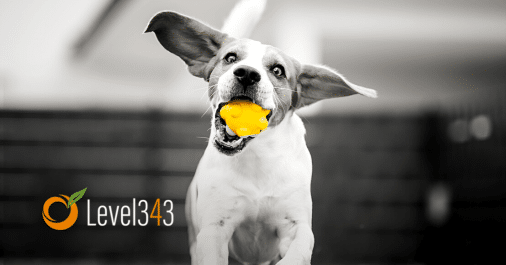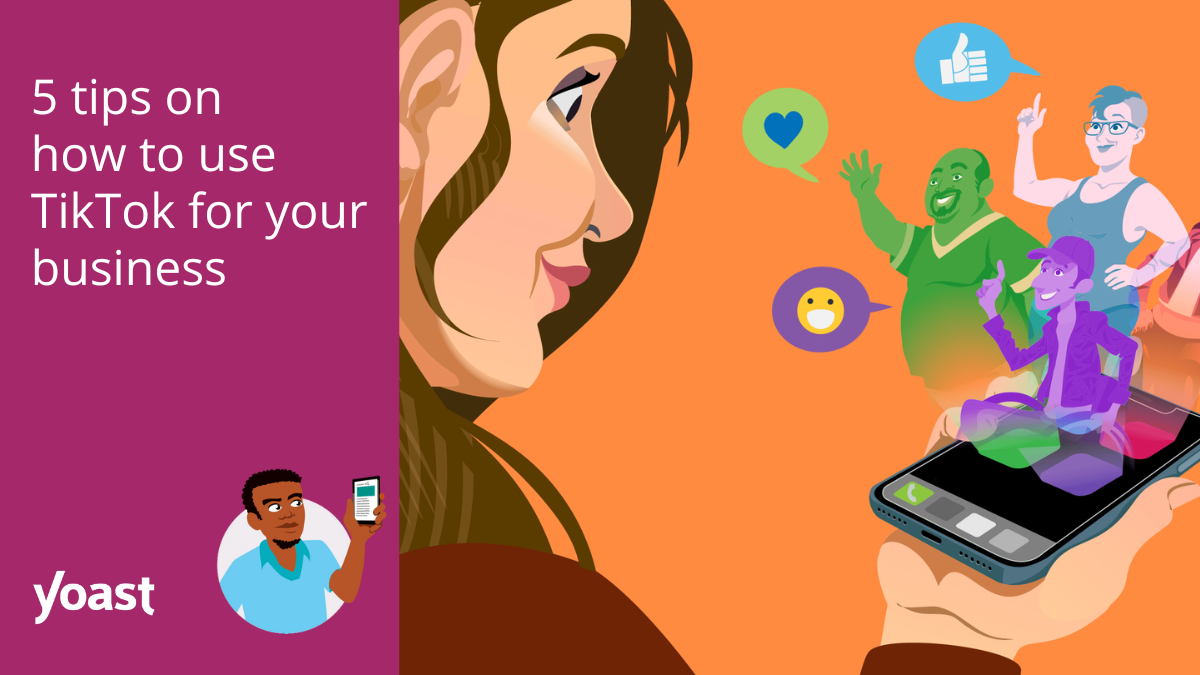
Understanding consumer buyer behavior, buyer psychology, and visitor behavior is crucial for businesses aiming to maximize their marketing efforts. By analyzing market studies and testing different types of content, businesses can effectively tap into their target audience’s mindset and achieve greater influence. After all, if you can understand your target market well enough, you have a lot of influence.
In learning how our world works, we’ve found a lot of laws. Every time we see something that occurs often, we have to call it a law. Like the law of gravity – Newton sees that the apple always falls. Therefore, there must be a law that says it’s so.
Edward Thorndike saw a common occurrence in human behavior. He summed it up by calling it the Law of Effect. In short, if we do something that brings pleasant consequences, we’re much more likely to do it again. If we do something that brings unpleasant consequences, we’re much less likely to do it again.
The Law of Effect governs our entire world, including our buying behavior.
Reinforcement: Operant And Respondent Behavior
Where Thorndike left off, Burrhus Frederic (B.F.) Skinner picked up. He said, “Okay, listen. If the effects of our actions define whether we do them again, then we should be able to change our behavior through positive or negative reinforcement.” He called it operant conditioning, and broke it down into three types:
- Neutral: responses that don’t affect whether the behavior is repeated
- Reinforcers: Responses that increase the chance of repetition (either positive or negative)
- Punishers: Responses that decrease the chance of repetition
The most famous example of respondent conditioning is what’s become known as “Pavlov’s dogs”. A bell would ring and the dogs would begin salivating. Cause (bell) and effect (drool).
Salivation became a learned response in the animals. Ivan Pavlov taught them that a bell rings; food is shown; the dogs salivate. Bell rings; food is shown; the dogs salivate. Bell rings; dogs salivate, because they learned that the bell signaled food. The action of salivating became involuntary.
There are two major differences between operant and respondent conditioning/behavior:
- Operant conditioning comes after the action; operant behavior is voluntary.
- Respondent conditioning comes before or with the action; operant behavior is involuntary.
Keep this information in mind as you read the rest of the article, because I’m going to tie it in with your business.
Merging Behavioral Psychology With Buyer Psychology And Business
The Law of Effect, operant conditioning, and respondent conditioning are all terms from behavioral psychology. However, they all apply to consumer buying behavior and buyer psychology as well. Our conditioning – through life’s experiences – greatly affects our responses.
As a business owner, you can leverage operant conditioning to influence buyer behavior. By providing positive reinforcement, such as discounts, promotions, or excellent customer service, you increase the likelihood of customers repeating their purchasing behavior.
On the other hand, negative reinforcement, like solving a customer’s problem or removing a pain point, can also encourage repeat purchases. It’s essential to create a pleasant shopping experience to encourage customers to return and make more purchases.
Go beyond indecision
While you can’t change a customer’s respondent conditioning, you can help them overcome moments of indecision by providing guidance, addressing concerns, and offering alternatives. Ensure that your online presence is prepared to greet customers on their terms, address potential issues, and help them navigate the buying process.
Influencing Buyers Doesn’t Have To Be Sneaky
When someone comes to your site and begins to browse your products, many of them are actually looking for something. What they’re looking for is your best guess (or your analytics tracking’s results), but the fact that they’re looking for something is obvious.
Often, and this is true of brick-and-mortar businesses as well, they leave without buying because of something as simple as indecision. They simply can’t make up their minds. Either they’re torn by respondent conditioning, operant conditioning, or just plain too many choices.
At this moment of indecision, what many need is a nudge. They need a little bit of influence to get to the sale. That influence doesn’t have to be hidden.
Something as simple as a chat box with a live, helpful person at the other end, can make a big difference:
- Provide positive reinforcement about the company
- Build a feeling of trust in the company
- Provide the need to give positive feedback to the company
- Develop a feeling of self-actualization, accomplishment, and buyer satisfaction
Not every business can benefit from a chat box. That’s not the real takeaway, here. The real takeaway is this.
Your market is made of living, breathing individuals with their own consumer buying behavior. When they come to your site, your online business presence has to be prepared to greet them on their own terms with various forms of content, whether it’s long-form content like case studies, or content marketing in the form of blogs and ebooks.
As well, it has to be prepared to deal with moments of indecision and worries from various respondent conditioning, and then help them walk through the buying process.
Your homework, should you choose to accept it:
Pretend you’re a buyer, visiting your site for the first time. You know nothing about the business, but it’s advertising a product or service you want. Try to find information on that product or service, and then answer these questions:
- How much information comes up?
- How many choices does the site provide?
- Are there places in the search/buy process where potential moments of indecision can be better addressed?
- How easy has the site made it to contact a live person with questions?
- How does the site address potential issues such as privacy concerns?
These are important questions to answer.
Buyer psychology is more than just getting into the customer’s head. It’s more than persuading them to buy something they don’t need. In actuality, it’s helping them to find the best answer to their problem.
The Psychology Of Content
Now that we’ve talked about buyer psychology, consumer buying behavior, and the fact that your job is to help them find the best answer based on your product or services, let’s talk about the content you produce to keep them there.
The psychology of content is one of the most interesting and fascinating topics that any writer or marketer could explore. When it comes to content, there’s more to it than just putting together a well-written piece. The words you choose and how you put them together can have a significant impact on your readers – whether they realize it or not. Let’s look at some of the key aspects of the psychology of content, and see how we can use them to create a stronger connection with our readers.
Key Aspects of the Psychology of Content
One of the most important things to understand about the psychology of content is click behavior. This refers to the fact that people often make decisions based on what they see – even if they’re not consciously aware of it.
For example, if you’re looking for a new pair of shoes, you might click on an ad that shows a picture of a pair you like. The same goes for content – if your readers see something that interests them, they’re more likely to click through and read it.
Click behavior, click triggers, logical impulses, common sense… it’s all part of the psychology of content. The amazing thing is how much actually goes into this psychology.
Of course, simply getting people to click on your content isn’t enough. You also need to keep them engaged once they’re there. This is where click triggers come in. Click triggers are elements that encourage people to keep reading, such as:
- Headlines that are interesting or provocative
- Subheadings that break up the text and make it easy to scan
- Bulleted lists that are easy to digest
- Images or videos that help to illustrate the points you’re making
Words have more than just a dictionary meaning. They create imagery, emotion, and, most of all, a connection.
Words Mean Things
For example, when you say ” guarantee, ” you’d better be prepared to back it up. For example, have you ever wondered why an online clothing outfit would have a disclaimer that “product colors may vary slightly from those shown online”? You can bet someone saw the word “orange” for a color and complained because they received a shirt that didn’t look orange (to them).
If you can include these elements in your content, you’ll be much more likely to keep your readers engaged. And once you have their attention, you can start working on building a connection with them.
One of the best ways to do this is by appealing to their logical impulses. We all like to think that we’re rational beings, but the truth is that we often make decisions based on emotion. If you can tap into this emotional side of your reader’s brain, you’ll be much more likely to create a connection with them.
Consider Calls To Action
“Act” doesn’t offer the same feeling as “Act Now”. Simply by adding “now”, you give your call to action a sense of urgency. “Buy Now” isn’t as forceful either. It just doesn’t carry the same umph, the same power.
“Fill out this contact form below to get a free quote”… okay, it tells you what to do, but what about “Request a Quote Today!” with an arrow?
I can think of several examples, as I’m sure you can. Maybe they seem repetitive. Maybe you’re a creative individual and believe you can do better than “Act Now”, and maybe you’re right. Before you get creative, though, consider why words like these are used repeatedly by any number of companies. The simple answer is – because they work.
Why Is Content Crafted, Not Written?
Copywriters like to use the word “crafted” when talking about content: “Well-crafted content”. Why can’t we simply say “well-written”?
Writing content is a craft. Part linguistics, part buyer psychology, part marketing… a whole bunch of parts go into a single piece of content. The writer has to take all those parts and “craft” a clean, easy-to-read marketing tool. Of course, it could also have something to do with the fact that “crafted” sounds stronger than “wrote”…
In studying consumer buying behavior, we study things such as click behavior; why do visitors click on Meta tag A instead of B or C? Why is it easier to find the shopping cart if it’s in the upper left-hand corner than if it’s… well, any place else? What elements of a page can be considered “click-triggers”?
Millions of people use the Web. We search through links, scan headlines, jump from intriguing snippet to intriguing snippet, and find the best pricing on our every need. With the tons of choices out there, how do we decide which site to land on?
- Sticky content
- Attention-grabbing, well-written headlines
- Finely-crafted copy
- Pleasant user experience
These sites manage to hit a sequence for the natural, logical buying impulse.
We have a desire; these sites make fulfillment and conversion a natural progression rather than a forced, manipulated sale. We stay relaxed because our defenses (raised by feeling pushed) are never triggered; in turn, we stay longer, become more engaged, and, eventually, convert or gather brand recognition.
Never Mind The Man Behind The Curtain
Like the little man behind the curtain in The Wizard of Oz, we often believe our visitors and buyers are impossible to pin down. Content marketing strategies seem to be more of a “catchall”, rather than a targeted effort.
How visitors navigate websites is the stuff of magic, smoke, and mirrors. How consumers buy and make purchasing decisions is a bunch of sleight-of-hand. Because it very much looks like you have to learn how to read your visitors’ minds, many just shrug and guesstimate… which is similar to ignoring the facts about visitors and using guesswork instead.
Strip back the curtain, people. Don’t ignore the visitor. You can study the psychology of your target market. You can learn which types of content marketing resound better and drive traffic to your site. You can learn how to write to your ideal client profile and buyer personas, reach out to them, and lead them down your golden pathway to conversion.
You have a singular moment, unlike any other moment in your relationship with a potential customer. You’re at that one moment in time when you can persuade your visitor to convert using research, common sense, logical buying impulses, and classic conditioning.
Reinforce the concept you’re trying to get across with dynamic content and visual aids. Share information they really want to know. Entertain them. Tailor your presentation; turn your website into a fitted Armani for your target audience; always, always, stick to the K.I.S.S. principle
The simpler you keep the information, the lower the chances of people surfing away. Likewise, with research, a wee bit of foresight, a sprinkling of continuity, and a dollop of follow-through, you’ll have a strong grasp on your target market’s psychology.
For example, let’s say you’re writing an article about the benefits of a healthy lifestyle. If you can show your reader how living a healthier life will make them feel – happier, more energetic, etc. – you’re much more likely to get them on board than simply listing the facts.
Of course, this isn’t to say that facts and logic don’t play a role in the psychology of content. They do – but they shouldn’t be the only thing you focus on. Remember, people are emotional creatures, so try to appeal to their emotions as well as their logic when creating your content.
Incorporating Buyer Personas in Your Strategy
To effectively influence buyer behavior, it’s essential to develop buyer personas. These personas are fictional representations of your ideal customers, based on data and research. By creating buyer personas, you can better understand your target audience’s needs, preferences, and motivations, allowing you to create content that speaks to them directly and addresses their specific pain points.
- Research your market: Gather information about your existing customers, prospects, and market trends to identify common characteristics and patterns. Analyze demographics, online behavior, and customer feedback to gain insights.
- Segment your audience: Categorize your audience into different groups based on their shared characteristics, such as age, location, profession, interests, and buying behavior.
- Create: Develop in-depth profiles for each segment, including demographic information, goals, challenges, values, and preferences. Give each persona a name and a backstory to humanize them and make it easier to relate to them.
- Tailor your content and messaging: Craft content and messaging that caters to each persona’s specific needs and preferences. Ensure that your content speaks to their pain points, offers solutions, and is presented in a format they prefer.
- Monitor and adapt: Continuously analyze the effectiveness of your content and messaging for each persona. Make adjustments as needed to ensure your strategy remains relevant and effective.
By creating buyer personas and tailoring your content and messaging to their needs, you can effectively engage your audience and influence their purchasing decisions. Understanding the psychology of content will help you create compelling content that resonates with your audience, keeping them engaged and interested in your offerings.
In Conclusion
Understanding buyer behavior and psychology is crucial for businesses aiming to maximize their marketing efforts. By analyzing market studies, creating buyer personas, and crafting content that appeals to your target audience’s emotions and logic, you can successfully influence their purchasing decisions and drive business growth. Always remember to keep your content simple, engaging, and valuable to foster a strong connection with your audience and maintain their interest in your products or services.



